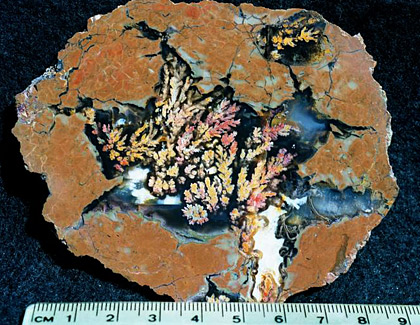In November 2016, we went to see Marv Dahmen’s collection of vintage Joplin/Tri-State mining equipment and minerals. He talked about it for 5 hours but there was never a dull moment. We managed to record some of it, although it was so long Stephanie and David ran out of space on their phones. Here are some photos.
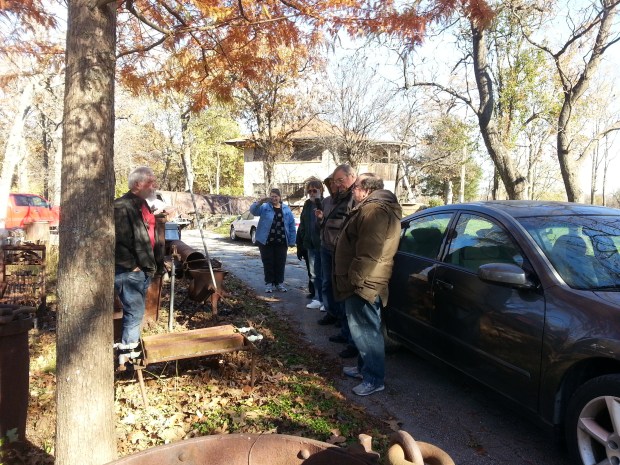
Everyone listening to Marv. Photo by Stephanie Reed

Ore buckets as far as the eye can see! Photo by David Reed
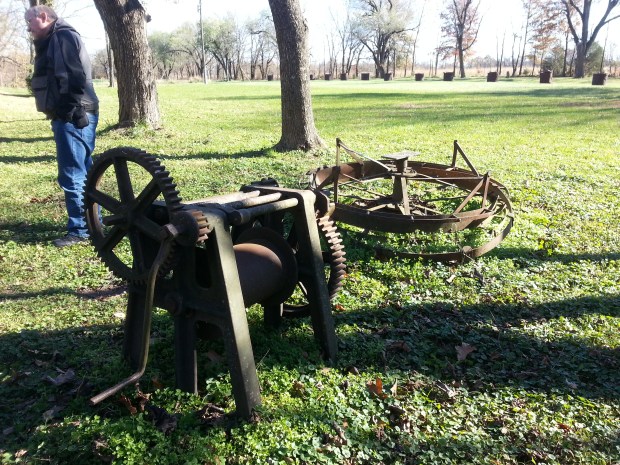
Ore crusher. Photo by Stephanie Reed

Most of the things outside are from the Picher Museum. Photo by Stephanie Reed
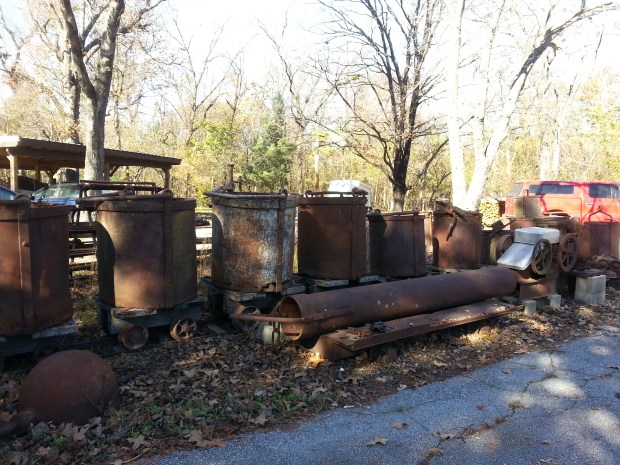
Ore buckets, a crucible, and one of the only 2 remaining drill bit buckets. They were sold for scrap metal when the Picher Museum was having hard times. Marv got them from the scrap metal place. Photo by Stephanie Reed
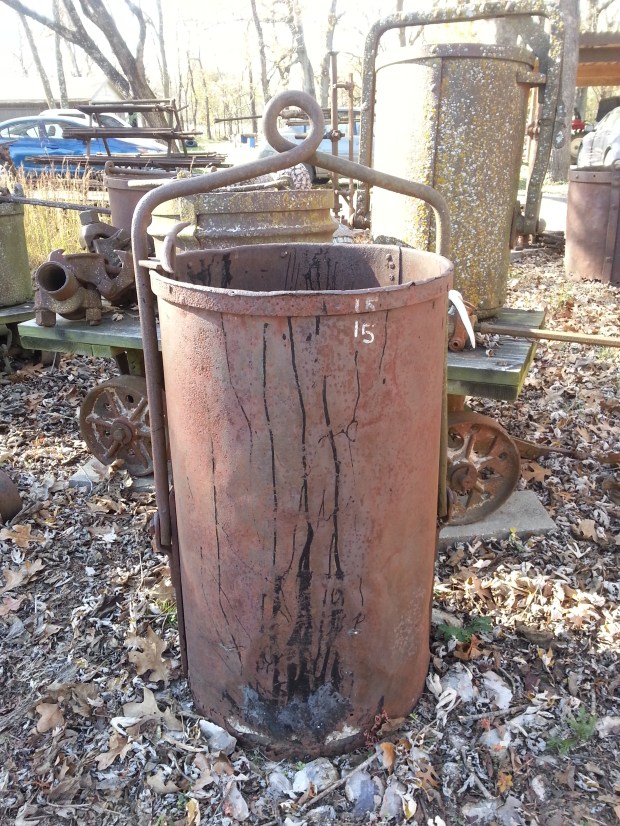
This is not an ore bucket. This is a dewatering bucket. Photo by Stephanie Reed
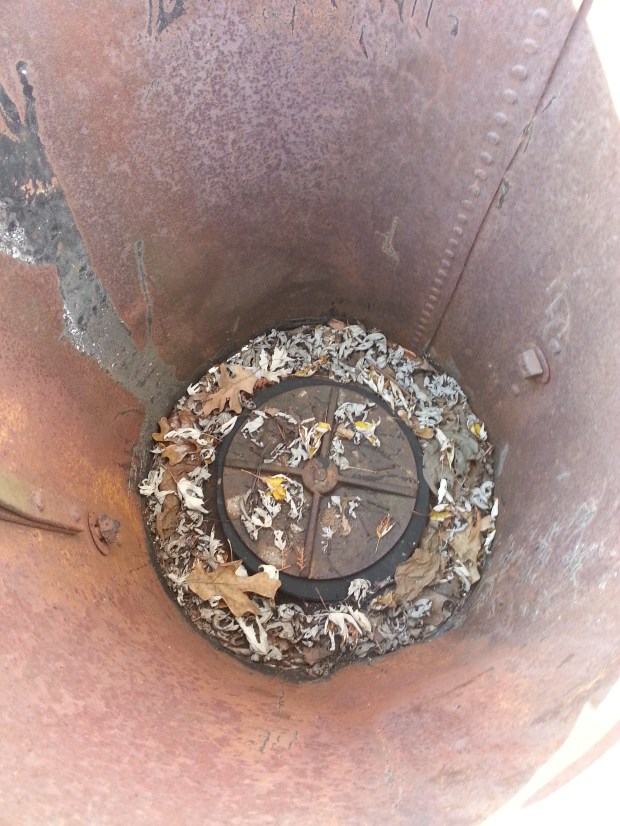
The inside of a dewatering bucket has a plunger inside. Photo by Stephanie Reed

A drill. Photo by David Reed
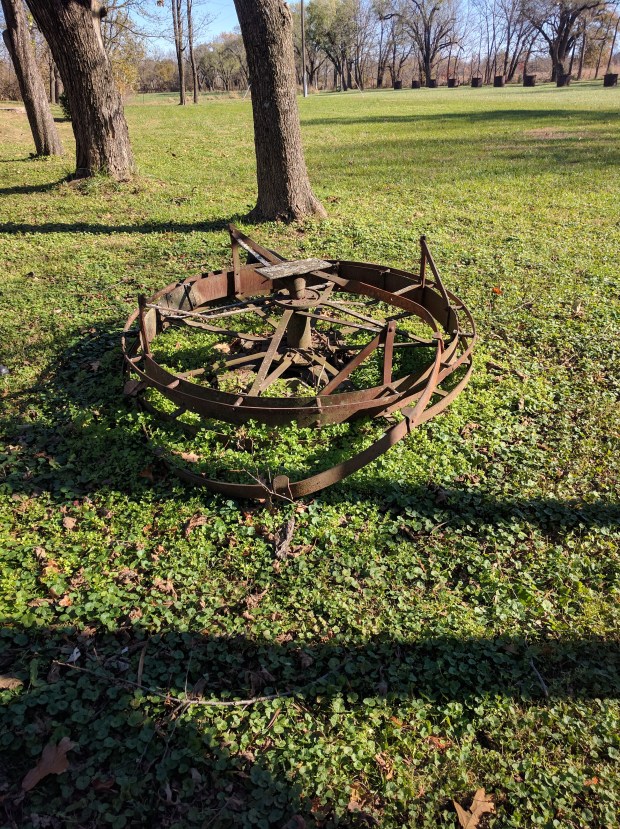
Photo by David Reed
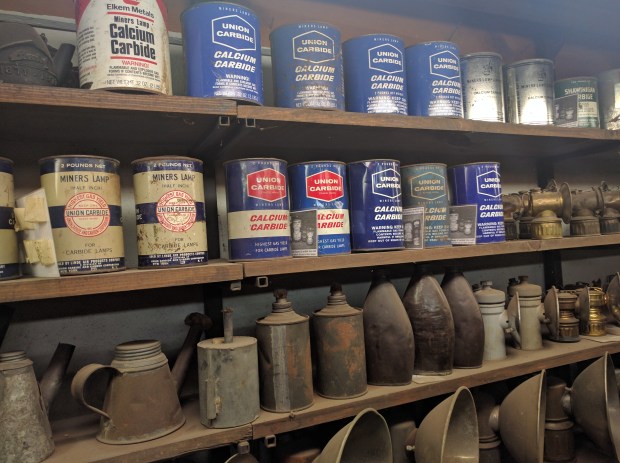
Calcium carbide and some lamps. Photo by David Reed
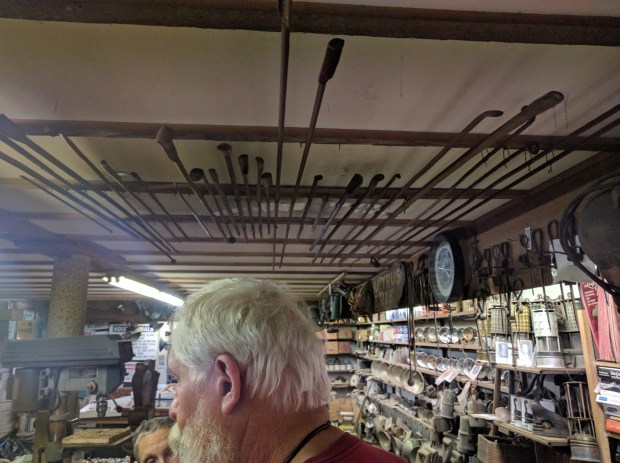
These long scoops are used to clean out the holes before putting in the dynamite. If you hit some debris while loading the dynamite it might explode. Photo by David Reed
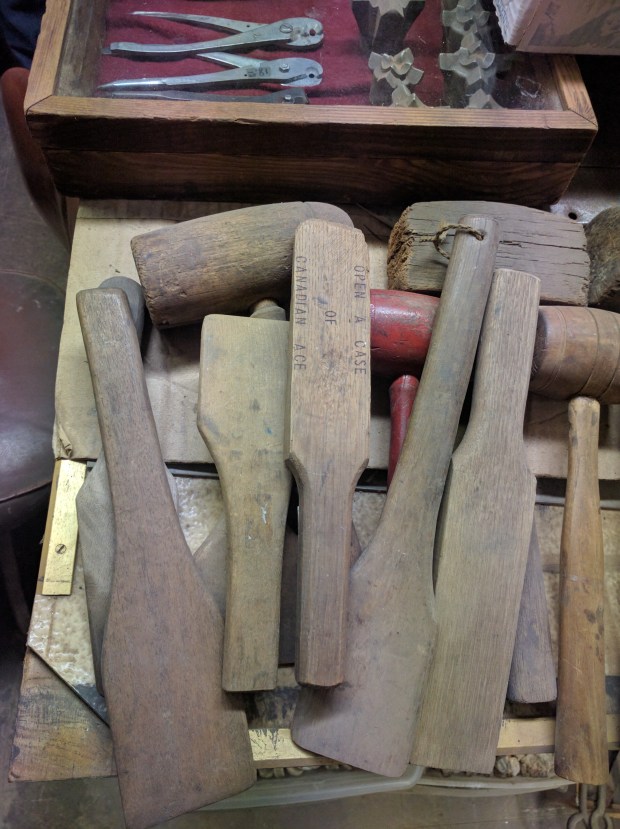
Wooden paddles for opening boxes of dynamite. It is too dangerous to use a metal implement. Photo by David Reed
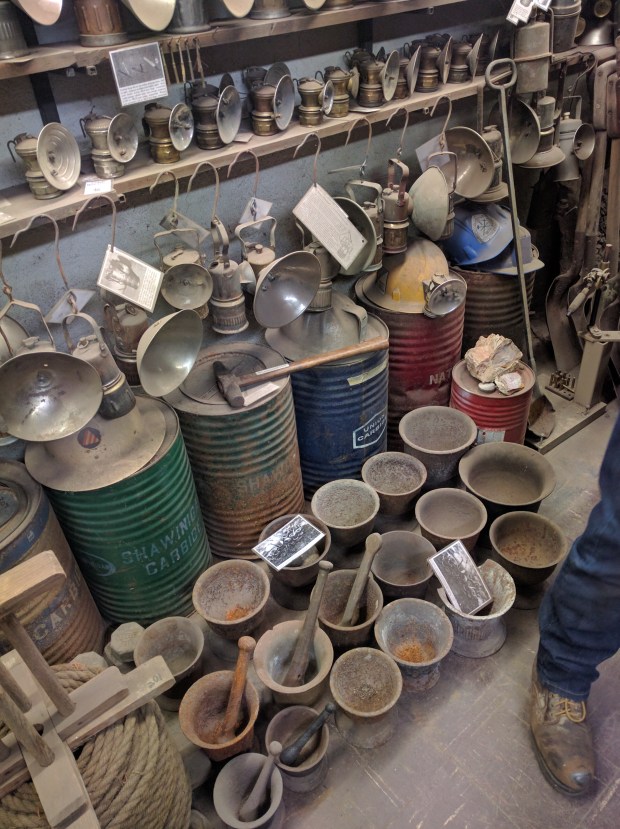
Lamps, containers of carbide, and mortars and pestles. Photo by David Reed
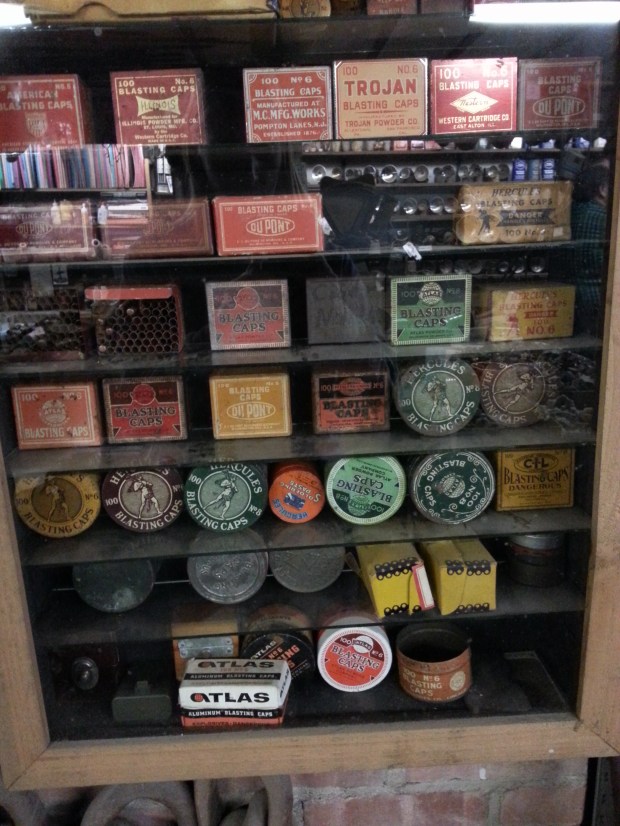
An impressive display of blasting caps. Photo by Stephanie Reed
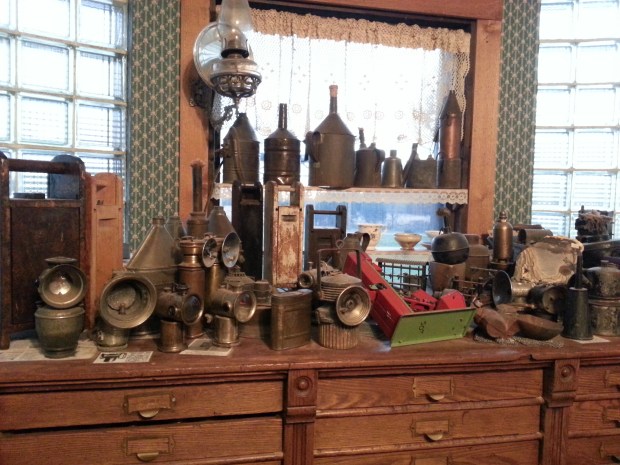
Guy’s dropper lamps. These were used before carbide lamps were invented. Photo by Stephanie Reed
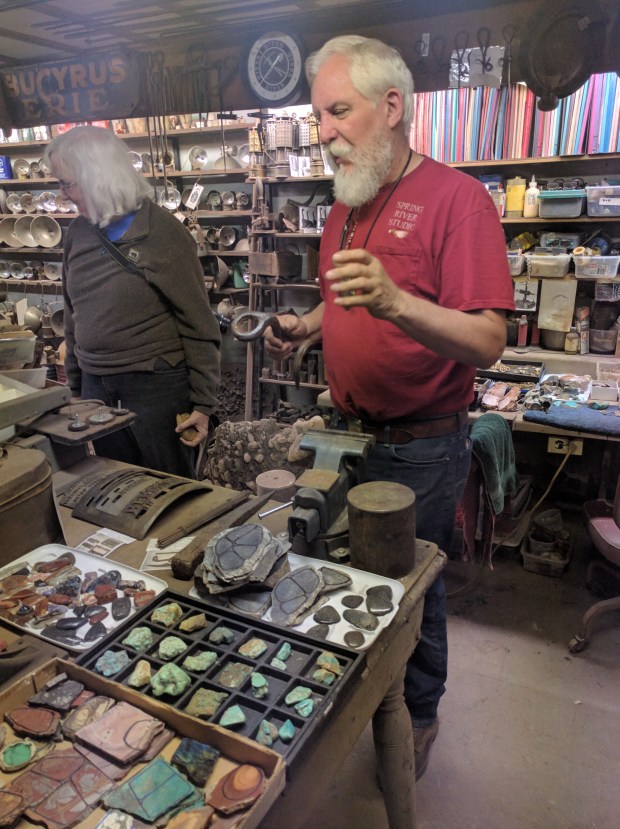
Marv in his workshop. On the table are some slabs that will soon be cut into cabs, and there is a curved plate that can be coated with ink and used to label boxes of Hercules dynamite (with removable plates for dates, lot numbers, etc.). Bucyrus Erie is a mining equipment company. Photo by David Reed
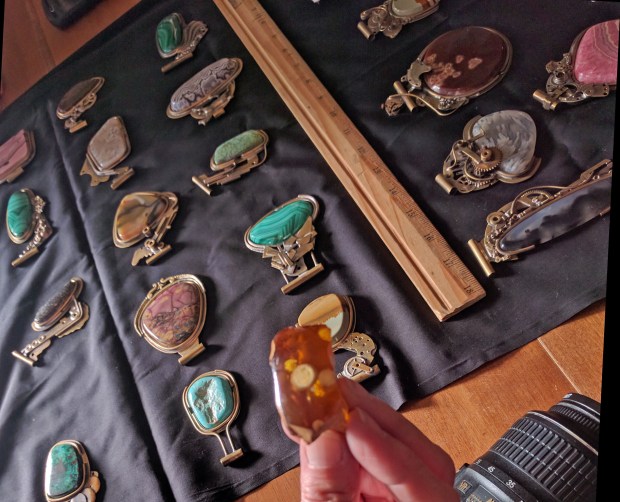
Marv also makes jewelry. Photo by David Reed
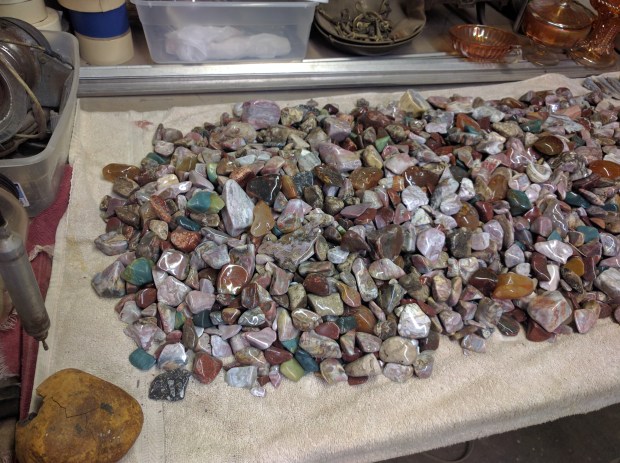
Some of his freshly tumbled rocks. Photo by David Reed
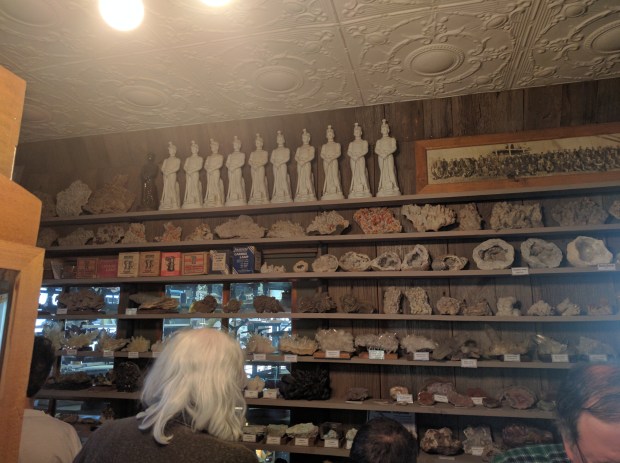
Part of Marv’s rock collection. Photo by David Reed

Lots of Owyhee Jasper from Oregon and Idaho. Photo by David Reed
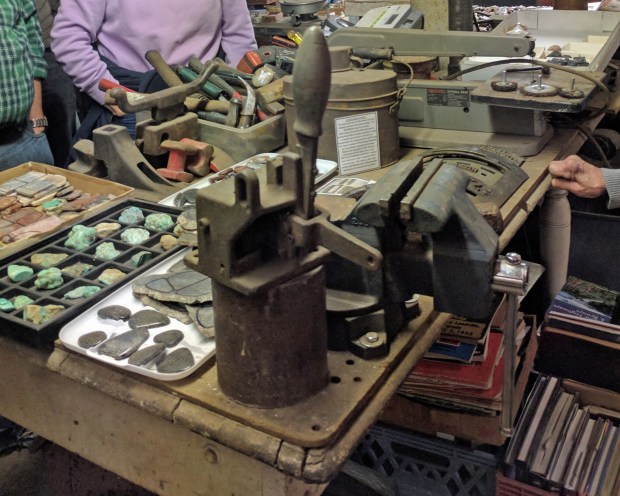
A device for crimping blasting caps. It is extremely rare. Photo by David Reed
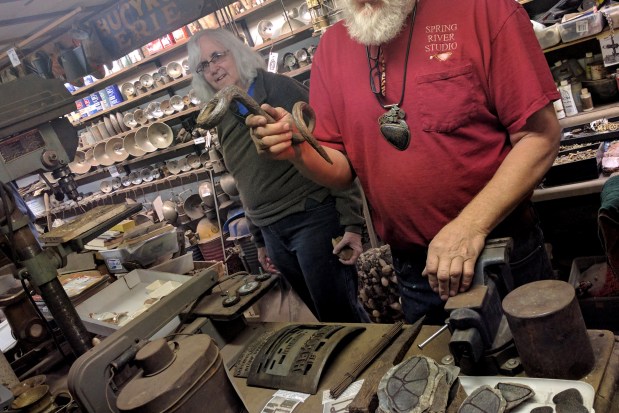
This is a pigtail, which is a blacksmith-made hook for ore buckets. It is specially curved so that the bucket won’t fall off while it is being raised up. Photo by David Reed
Thank you Marv for inviting us on your property and into your home to see your amazing collection!


























